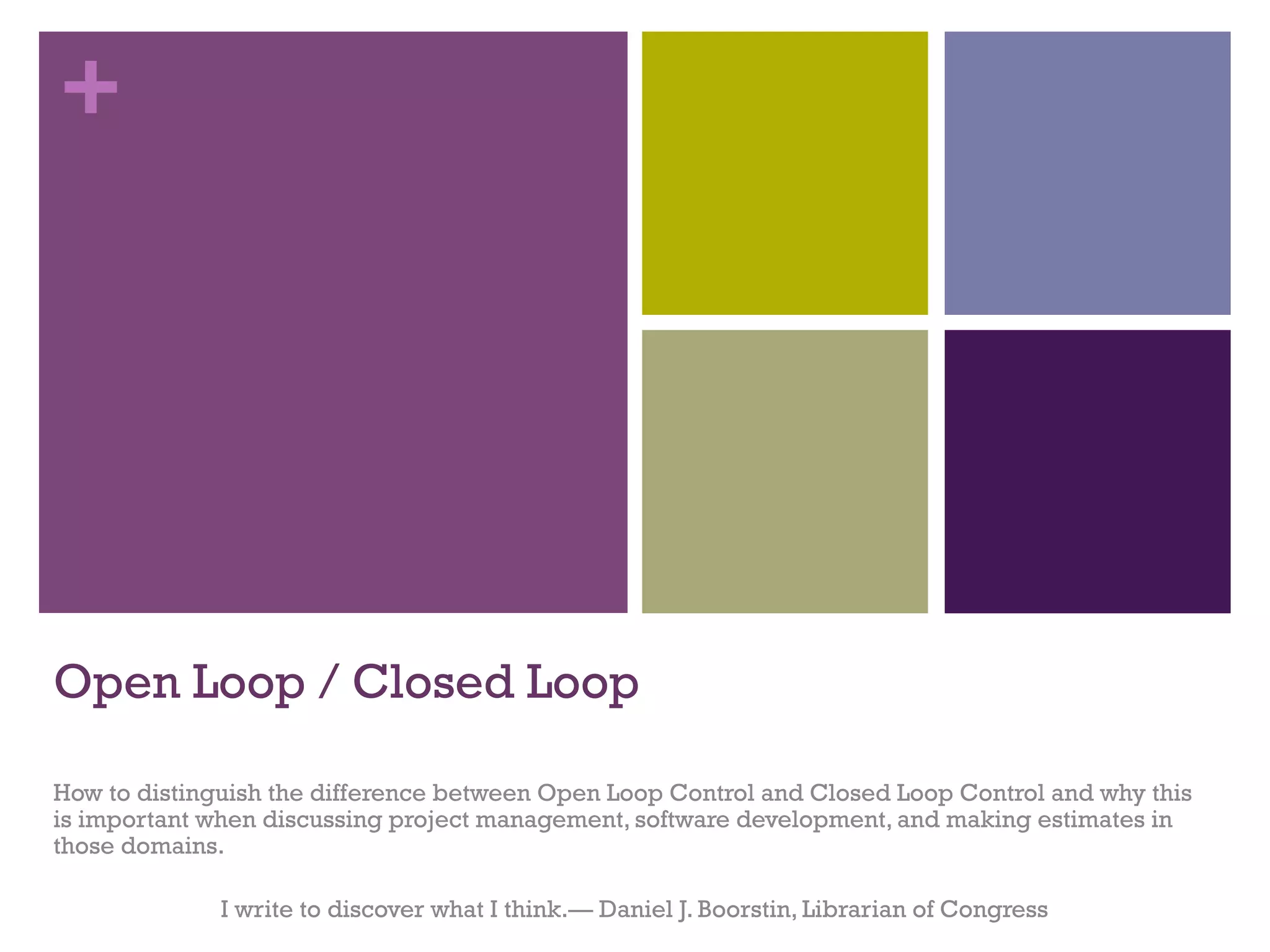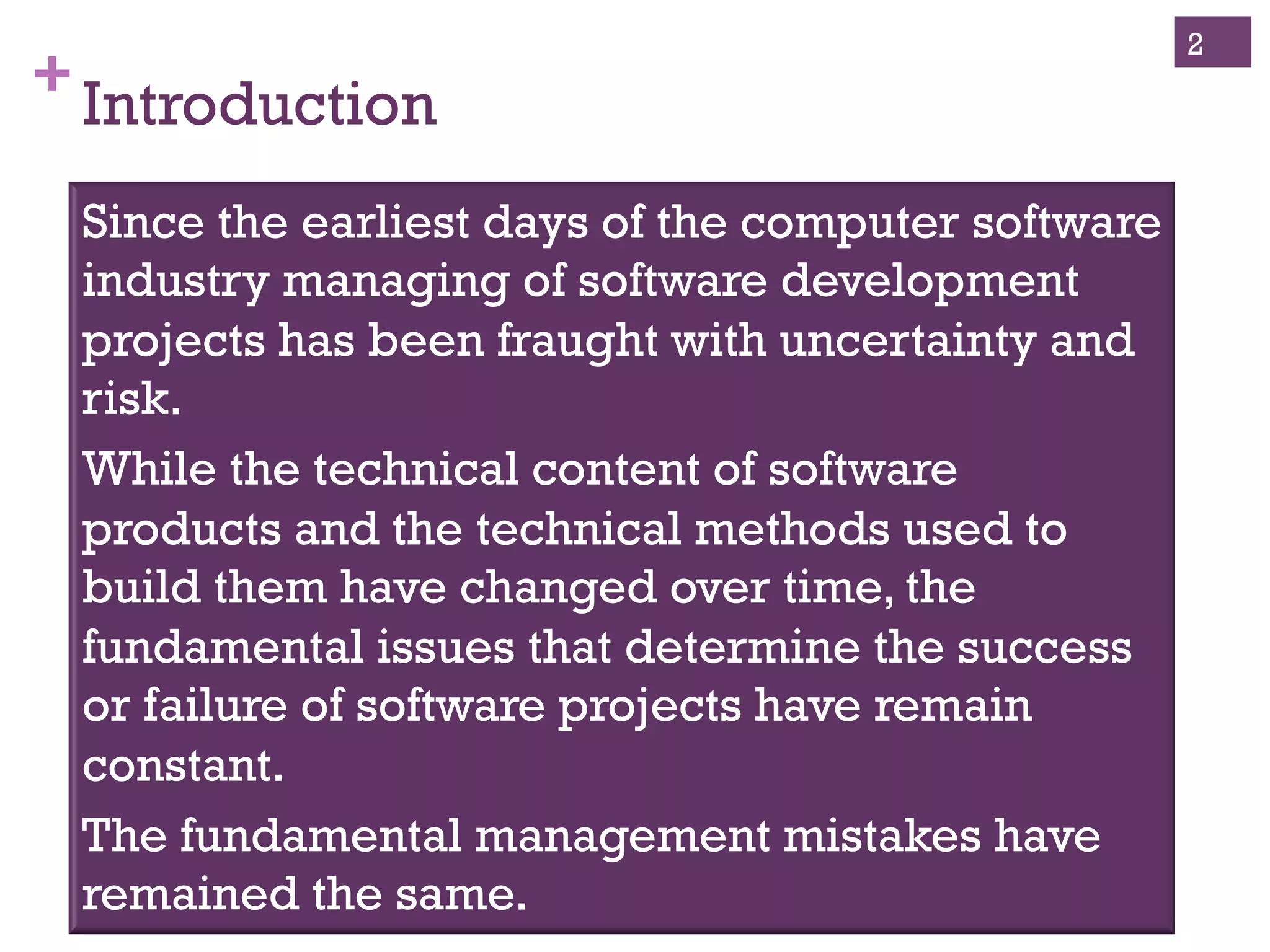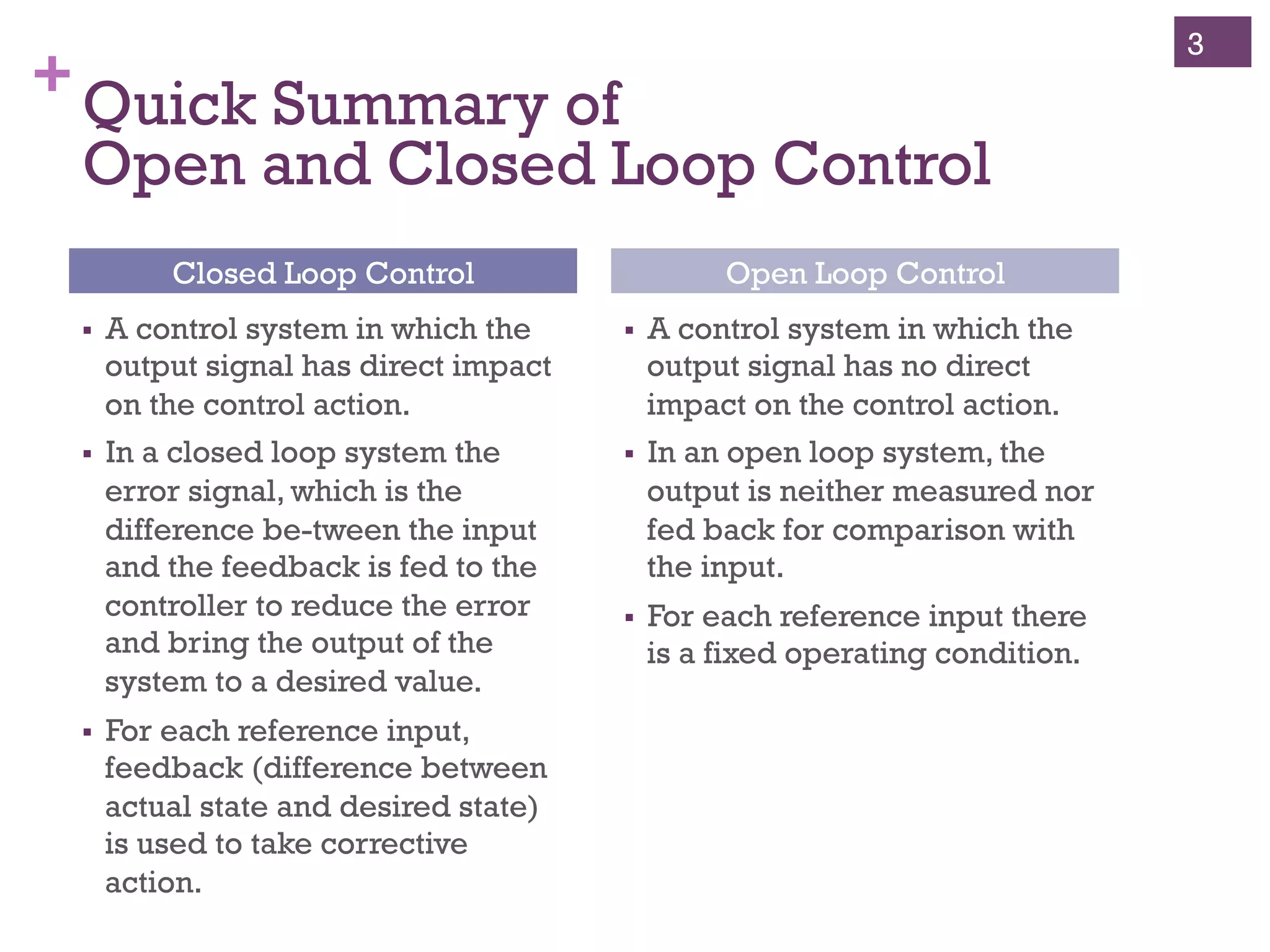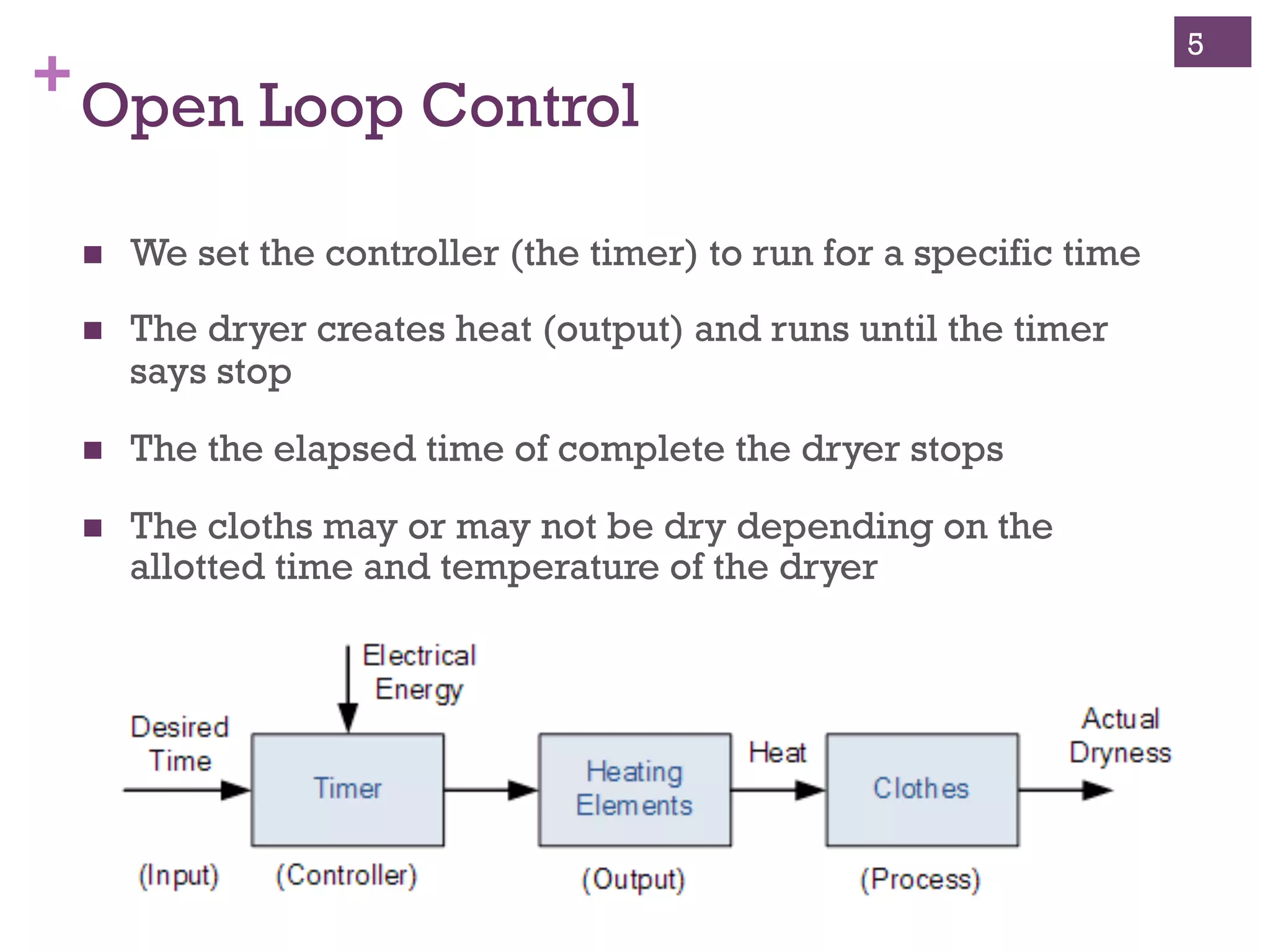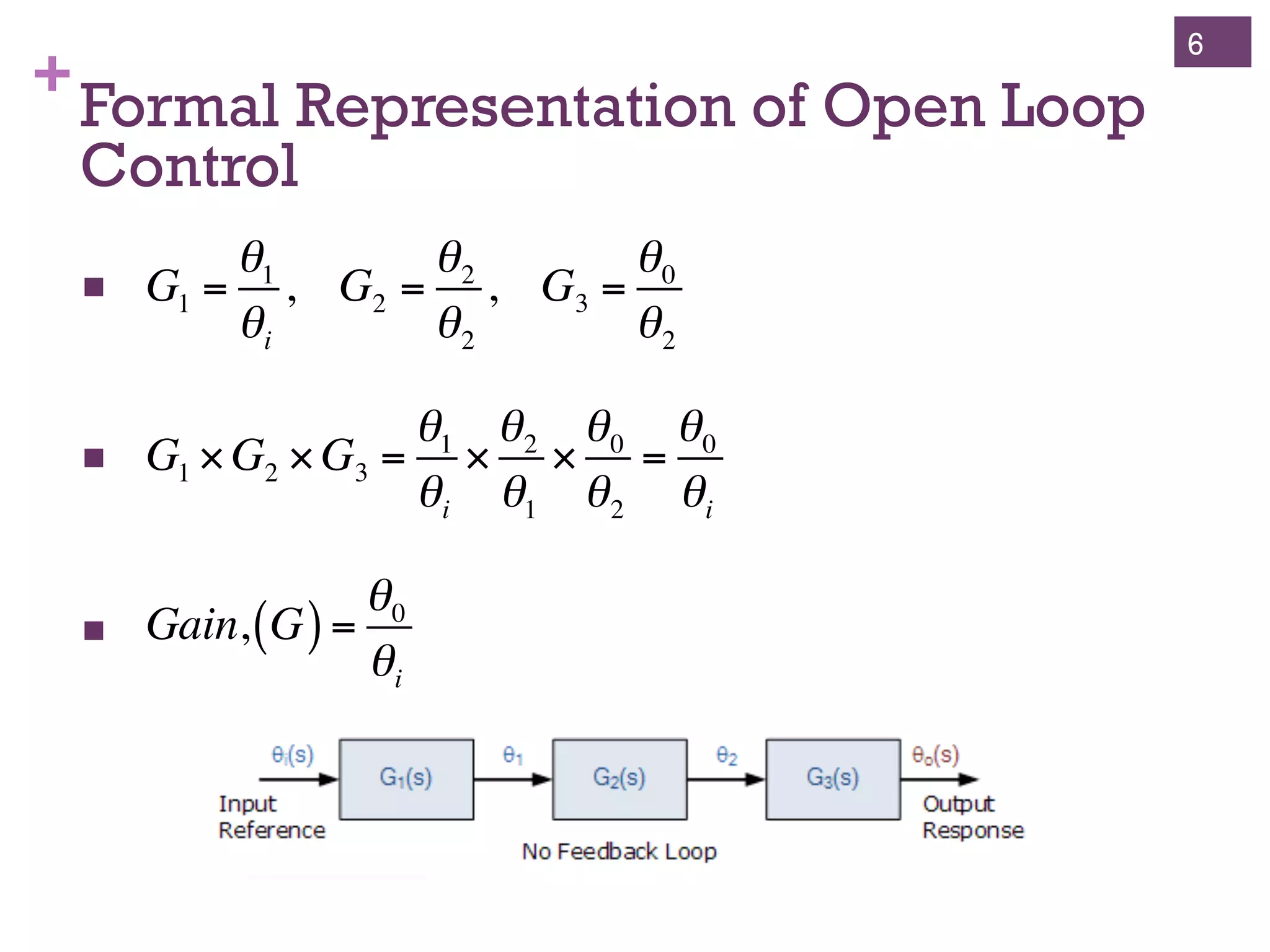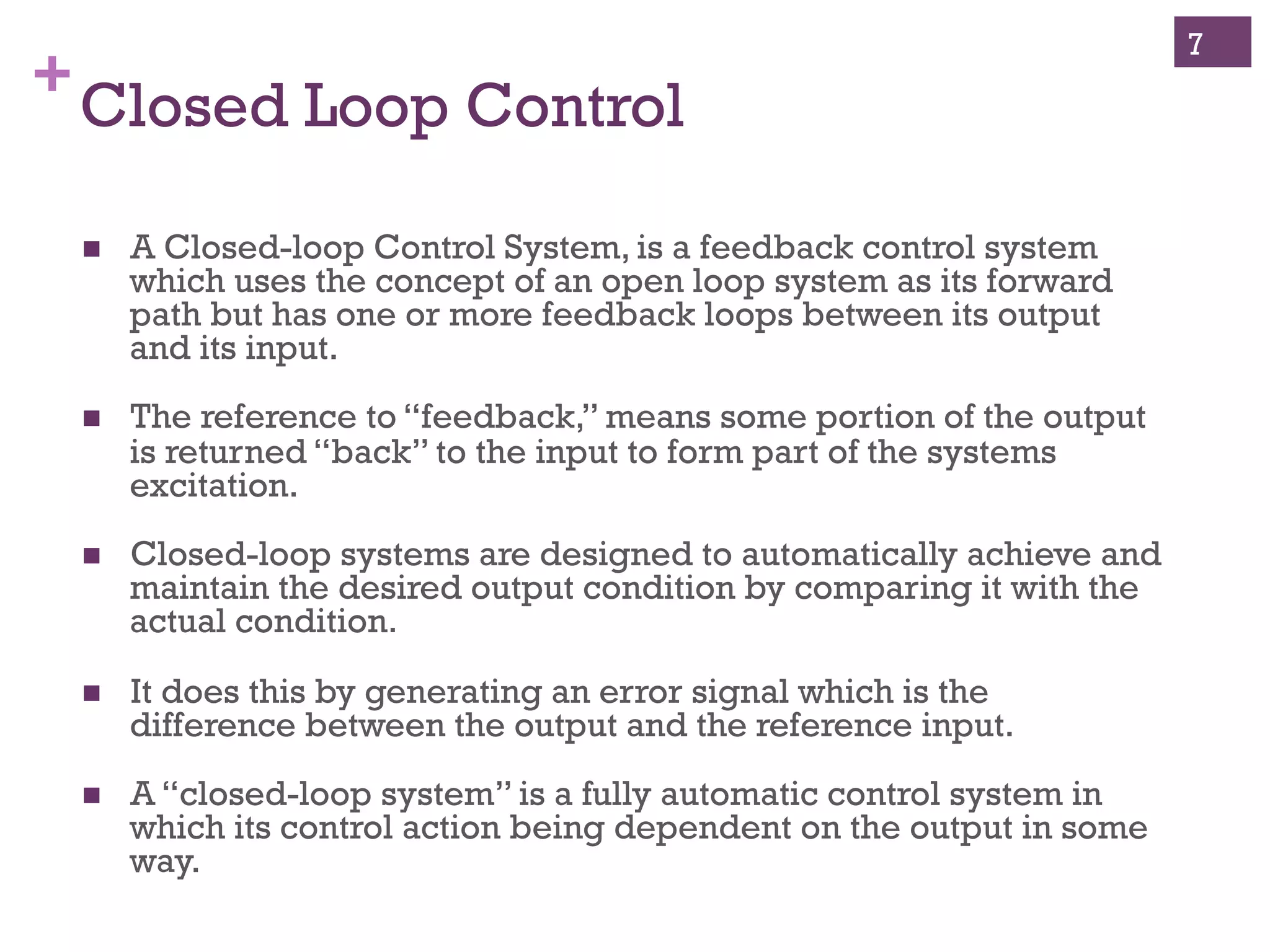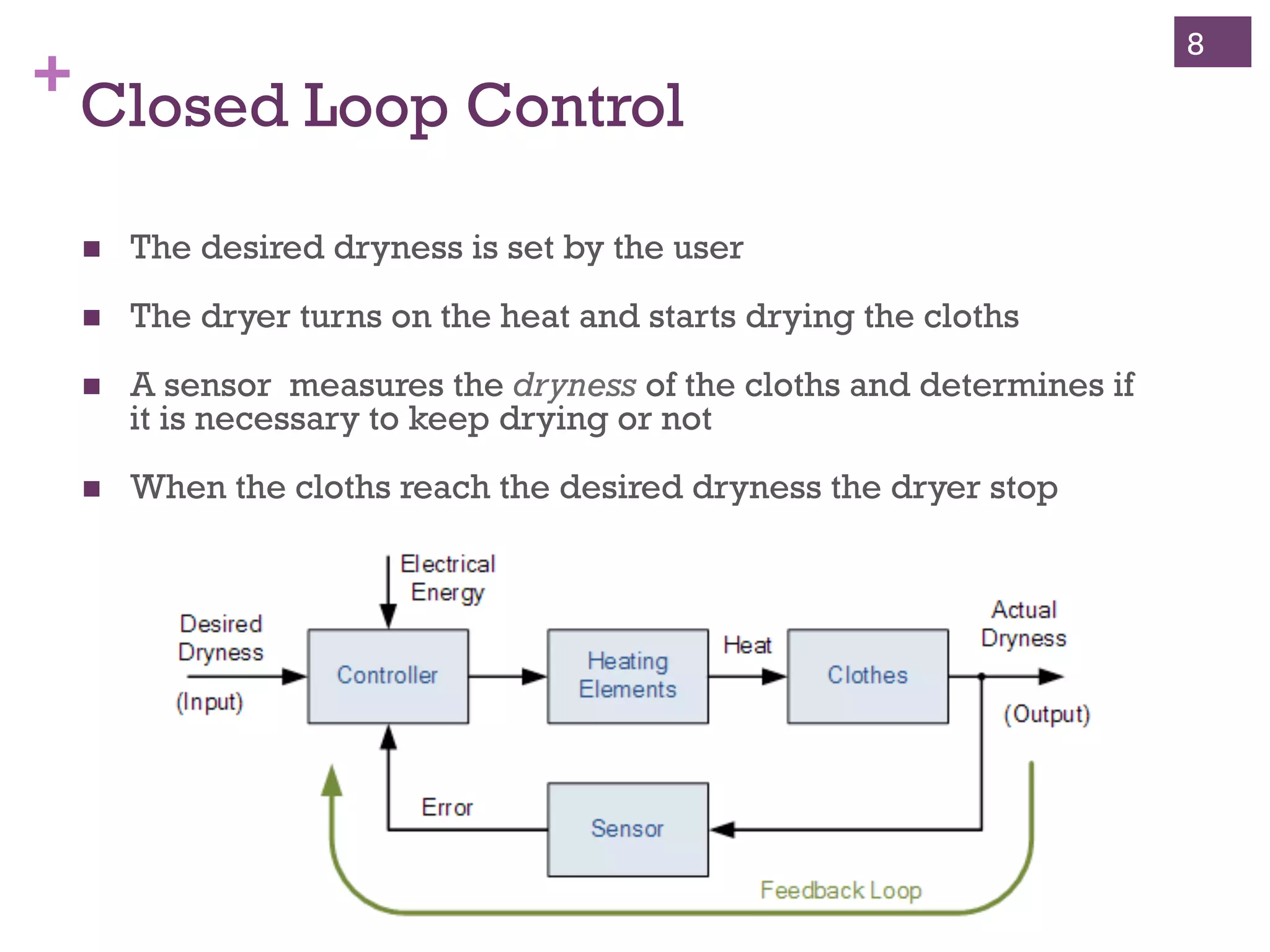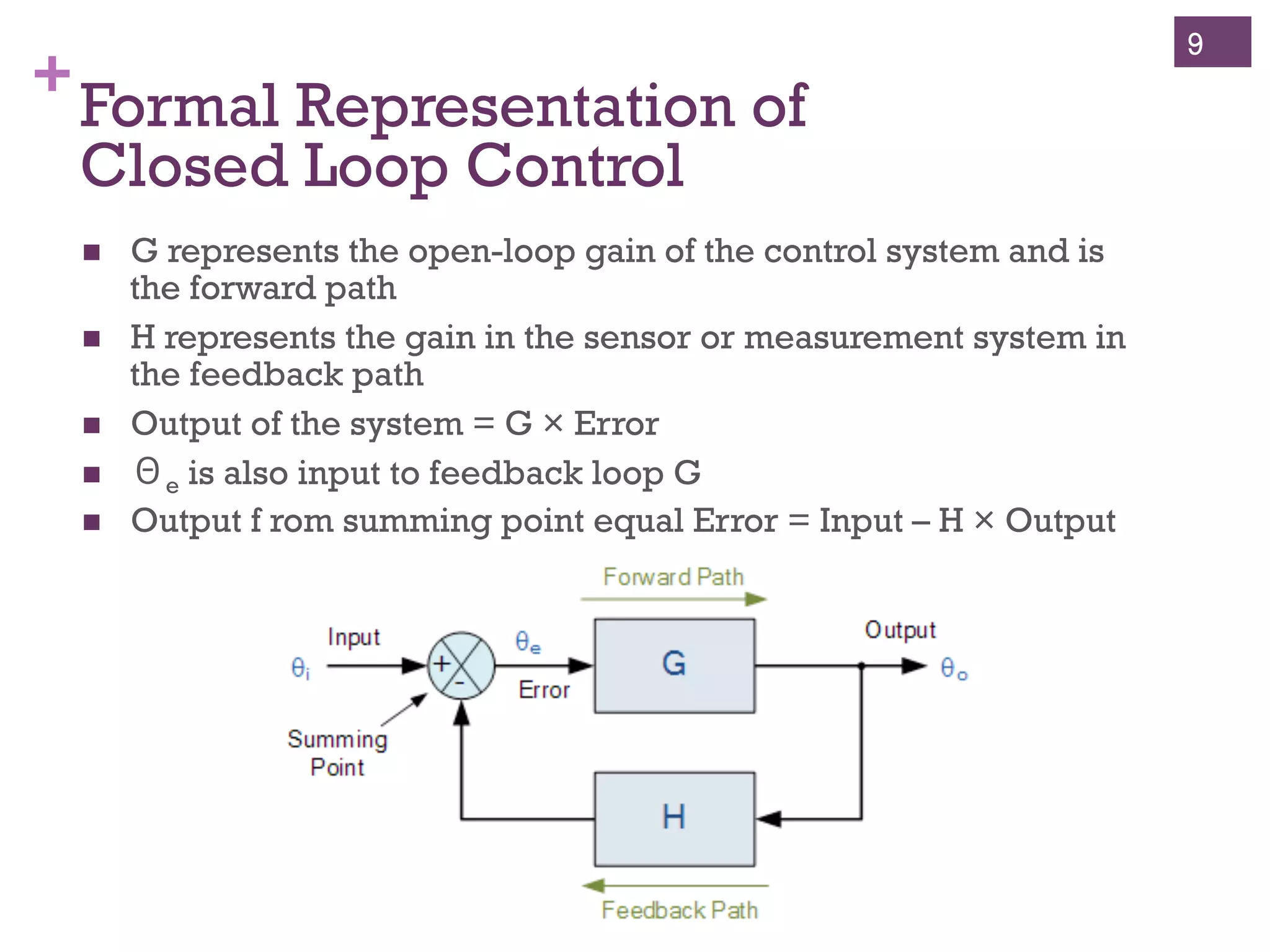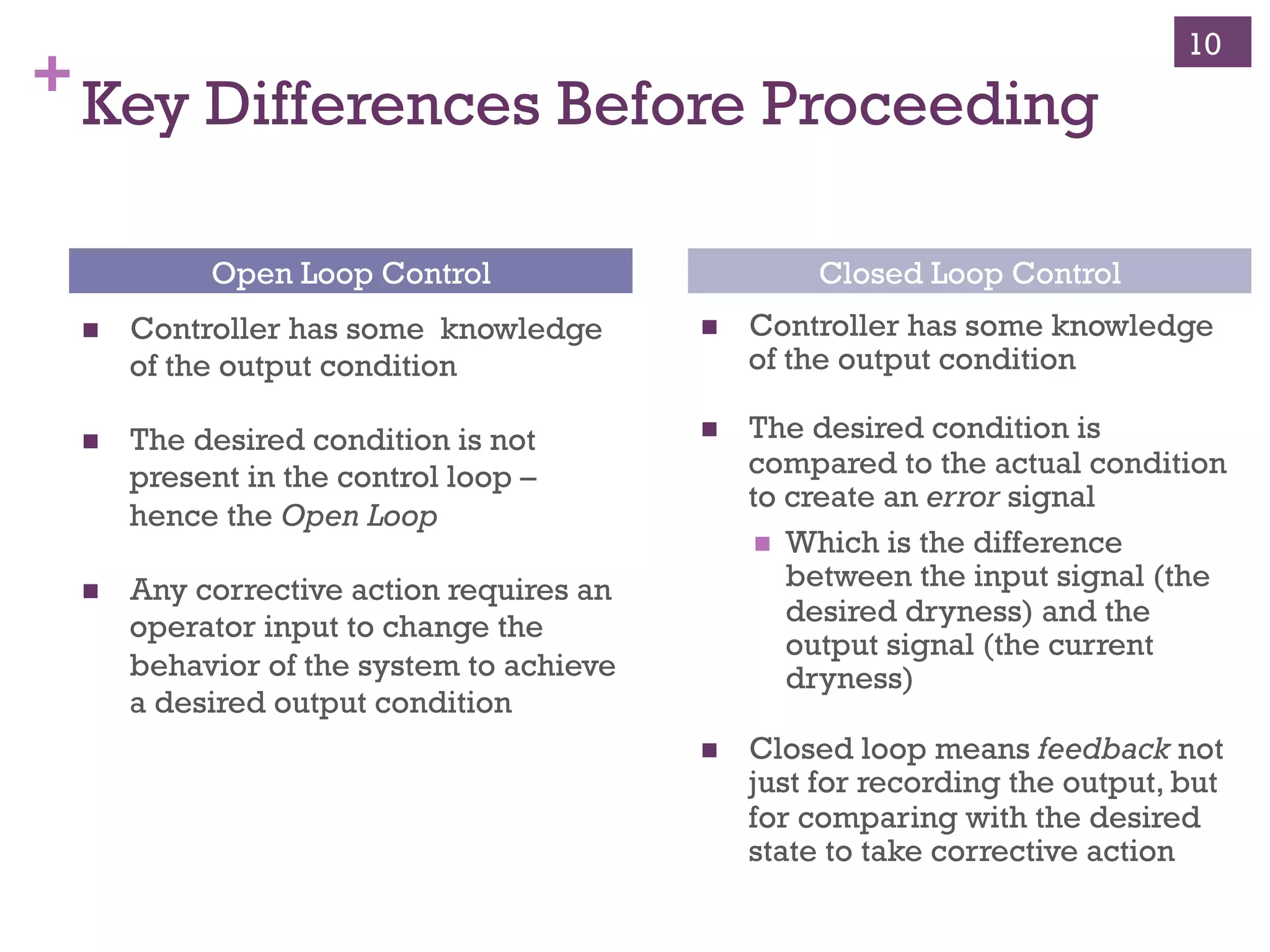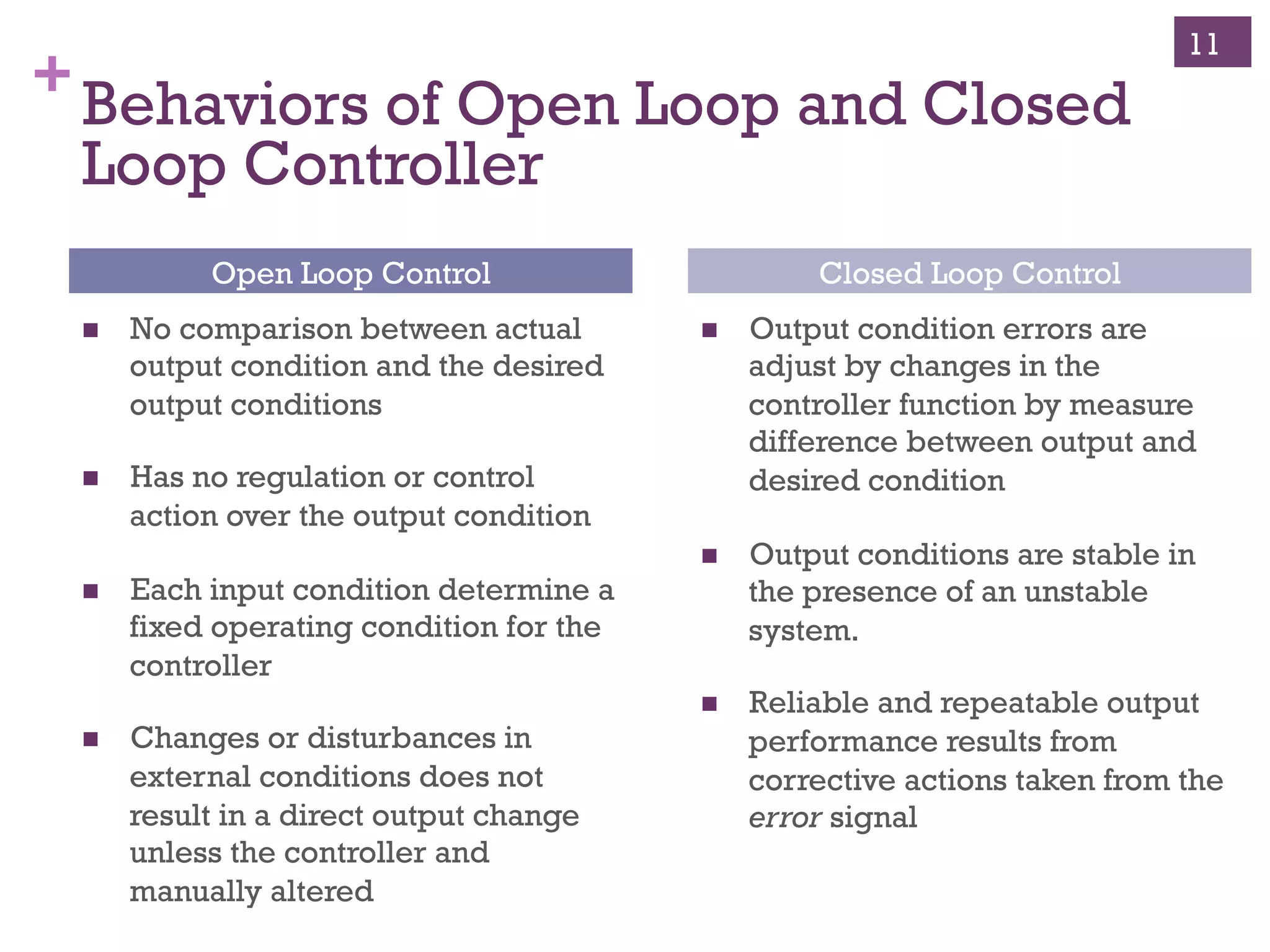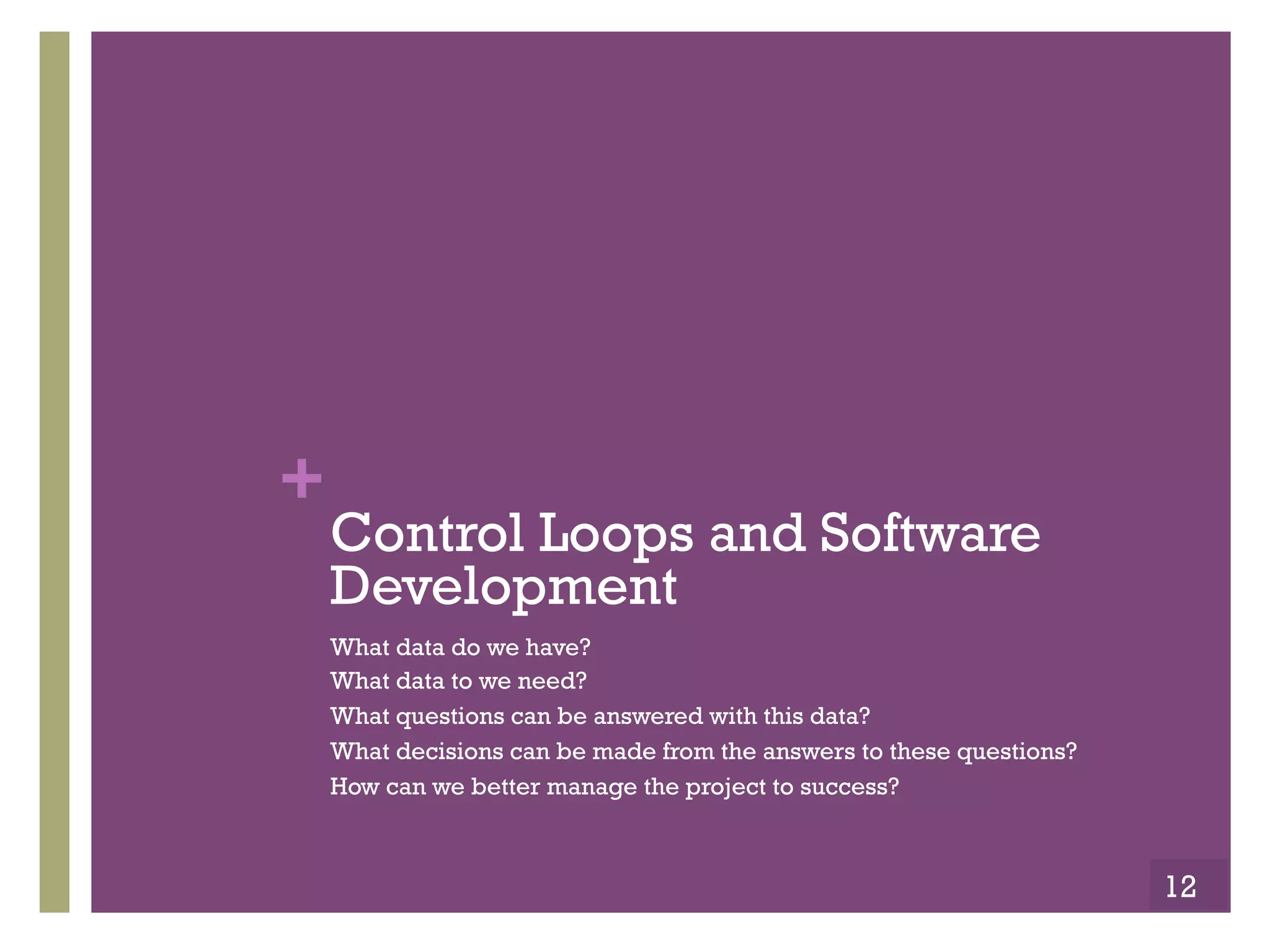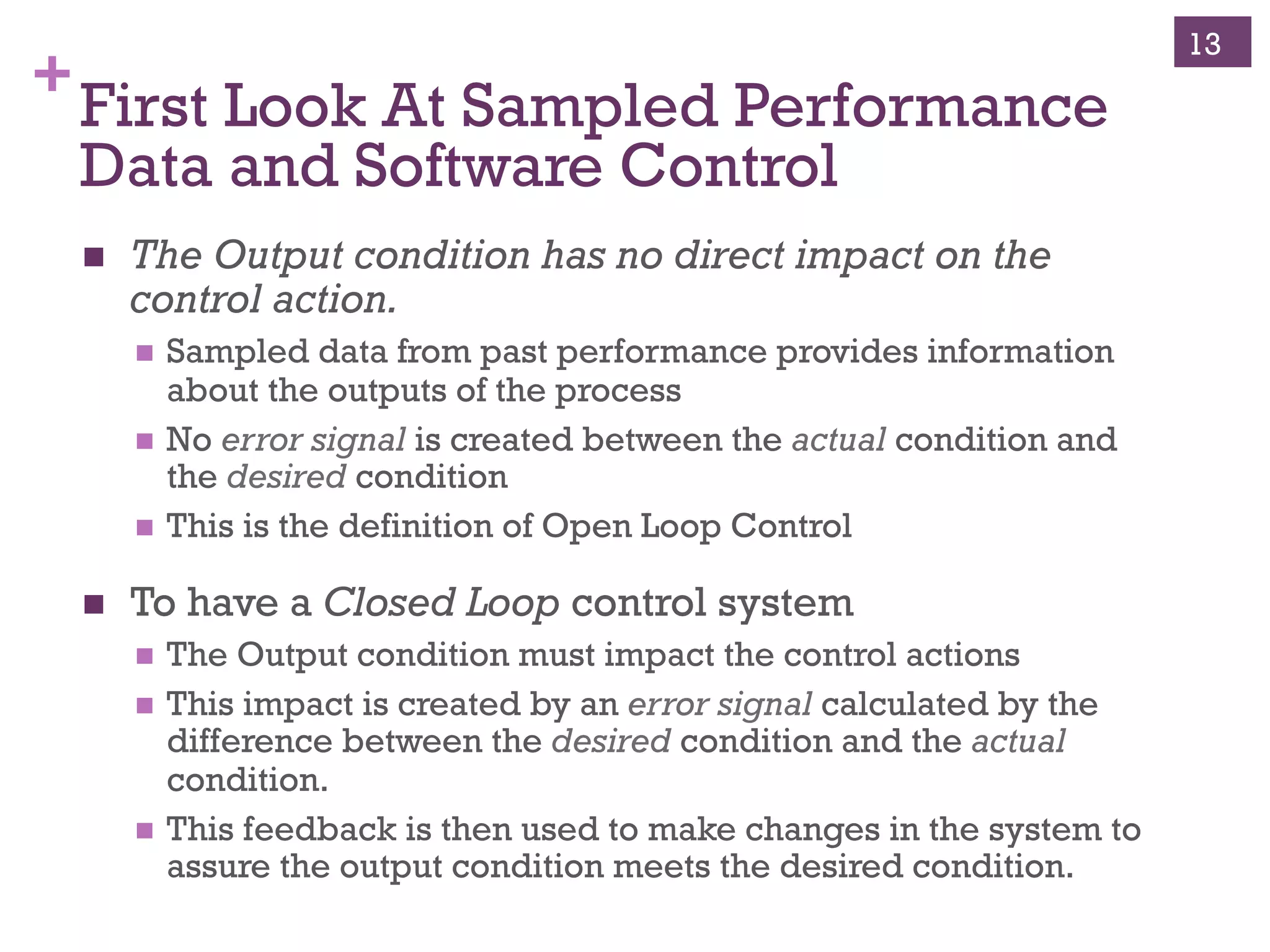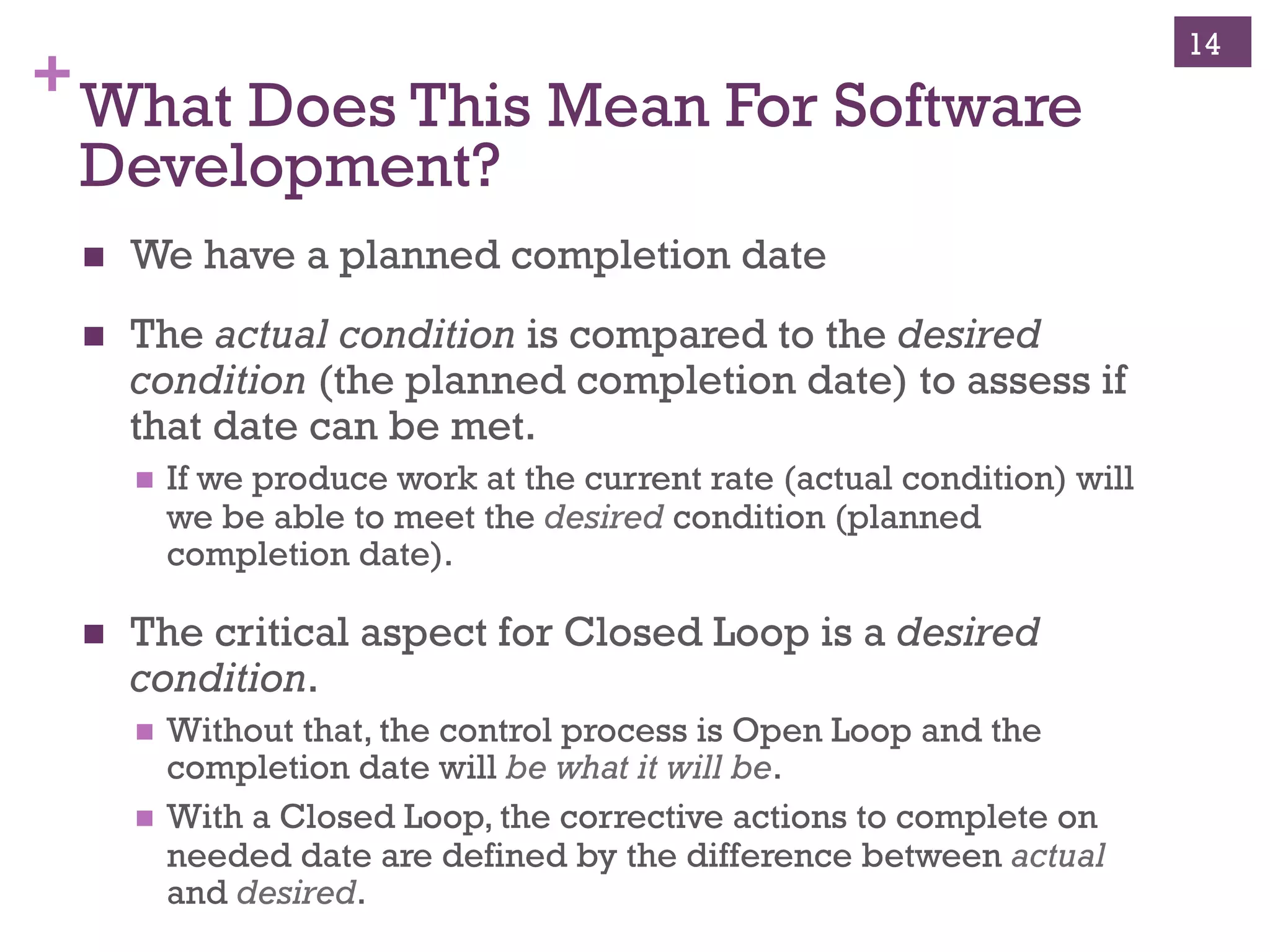This document discusses the differences between open loop and closed loop control systems and their application to project management and software development. An open loop system does not use feedback to adjust its output, while a closed loop system compares its actual output to a target and uses feedback to correct any errors. For software projects, an open loop approach does not ensure meeting a planned completion date, while a closed loop approach uses feedback from progress measurements to manage toward the target date if deviations occur.
